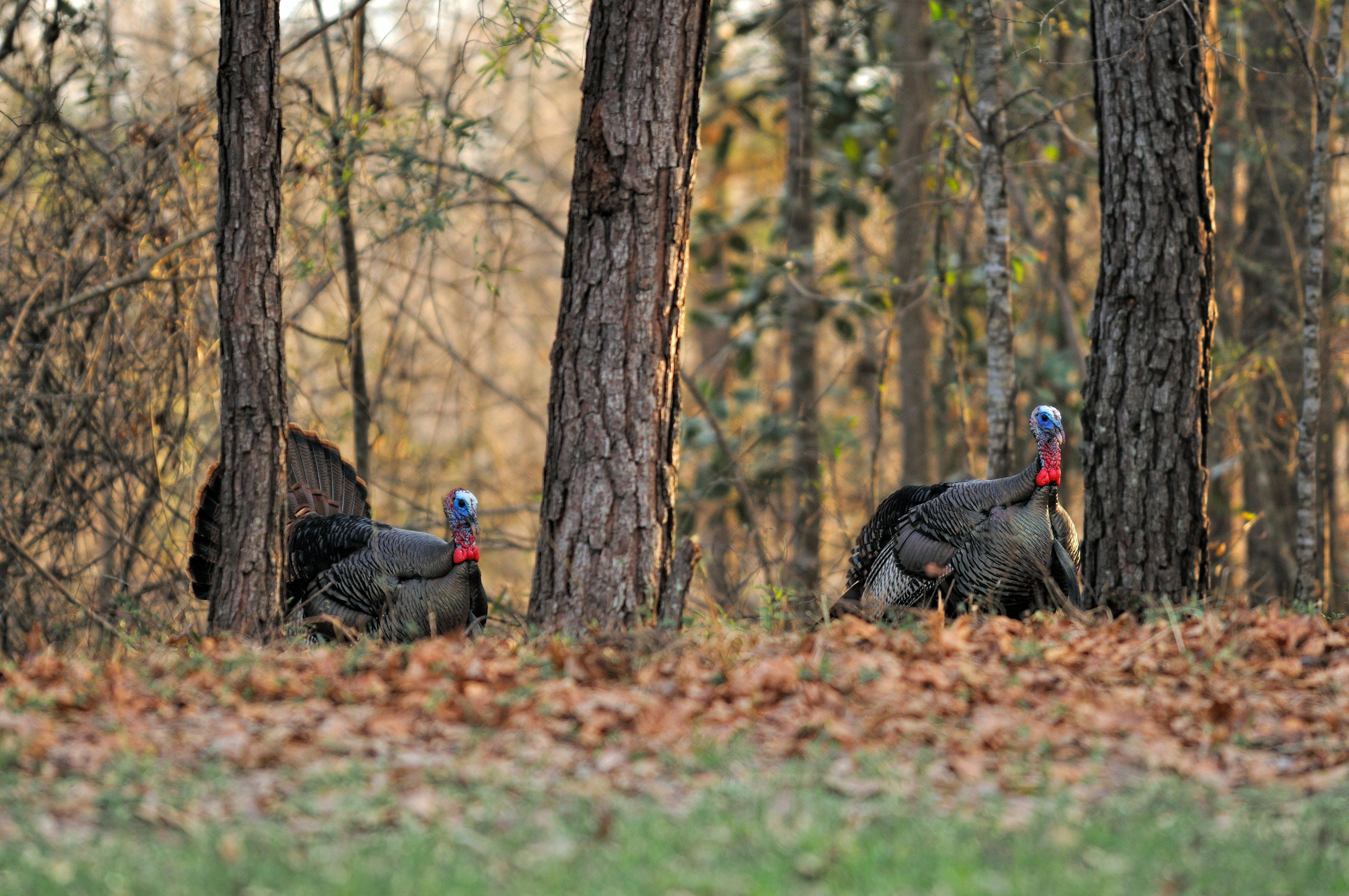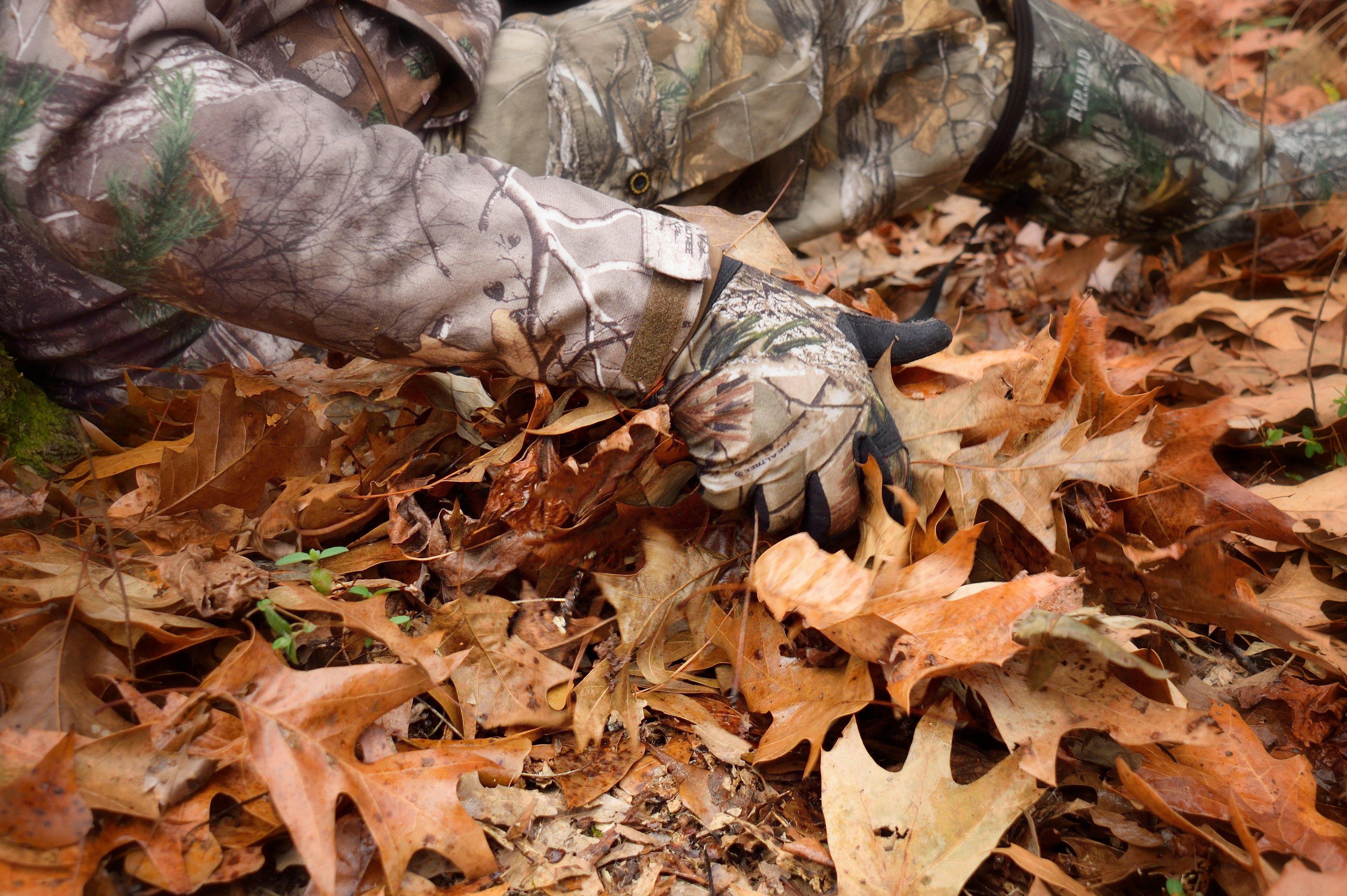Turkey Hunting Tips for Small Tracts
The morning broke still, clear and crisp. It promised to be a good gobbling day. My partner and I were positioned on a ridge where we could hear turkeys in any direction.
The first gobble came early, a good sign. We did not move. Ten minutes later, six gobblers were sounding off. They were all close enough to cover, but we held our ground and made note of their location. After several minutes the decision was made: the gobbler to our west was our best option. He was the hottest.
At that point all calm and discipline went out the window. We literally raced in the direction of the gobbler we had chosen to hunt. He was a quarter-mile away and we wanted to be there before he flew down. Halfway there we spooked several deer. It never occurred to us to wait and let the deer clear the area. We knew that if we bumped our chosen gobbler there were more birds to hunt.
At 200 yards, we slowed our approach. Closing 50 more yards we found a good setup location. Our first calls were answered with a lusty gobble. We heard wing beats as the gobbler flew down. Our next calls went unanswered. Ten minutes later, we were up and running to set up on one of the other gobblers we'd heard on the roost.
This setup produced lots of gobbling, but no gobbler in our sights. After 30 minutes we were off to another bird. And so it went until the fourth setup. There we found the gobbler we were looking for. He answered our calls, walked into range and took his first ride in a pickup truck.
Cut and Run
The morning described above was the way I hunted in the early years. I had plenty of ground to hunt and lots of turkeys on it. The philosophy was to go to as many turkeys as it took to find that one gobbler that would come to the gun and put on a show while doing it. We named the tactic cut and run.
The name aptly describes the strategy. Cover ground, call aggressively and do not waste time on a turkey that did not want to play. Leave that hard-headed turkey alone and go find one that would play.
It was exciting! It was fun! It worked!
In those days turkey hunting was not the popular sport it is today. Rarely did you encounter other hunters, plus there were lots of turkeys. Land lease prices were cheap and many large timber companies allowed hunting on huge tracts of land for the price of a permit. Many landowners allowed hunting on their property for the price of asking permission.
Today land lease prices have soared and permission access is almost nonexistent. Many hunters are limited to small farms or tracts of land. Some hunters share large tracts with other hunters, which effectively reduces their ability to roam.
There are more turkeys today than in the 1980s, but considering the number of hunters chasing them, I doubt the turkey-to-hunter ratio is as skewed as it was then.
Then, cut and run was an exciting and effective tactic. Today, if you're like me and most turkey hunters I know, it's no longer a viable option on many properties.
The consequences of cut-and-run hunting can have devastating effects on small properties. When you spook a gobbler, that bird often goes silent for the rest of the day or even longer. On small farms there may be only one gobbling bird. If you bump him, your hunt is over for the day, or even the week.
Gobblers in Small Places
Turkeys on small farms are no different than turkeys on large tracts of land. None recognize property boundaries. The difference is your ability to move with them if they leave your property.
Timber management practices, particularly in the South, can concentrate turkeys into small areas. Vast tracts of monoculture pine plantations offer little attraction to turkeys except in the first couple or so years, and not again until after the first thinning. In these areas most turkeys can be found in streamside management zones or SMZs. These zones are narrow hardwood strips left on the banks of a stream, creek or drainage that meanders through pine plantations. Turkeys find these areas attractive and spend most of their time in the hardwood strips.
Use the cover of the pines to approach a gobbling bird. When you reach the edge of the hardwoods, find a place to set up.
Getting in position on a turkey on a small place is critical. Slow down and try to be as quiet as possible as you approach. Once you're in place, do not over call. Mimic a feeding hen to convince a gobbler to come your way. Use leaf-scratching sounds, whines, clucks, purrs and yelps. If that fails, move back into the pines and circle around to get ahead of the gobbler and repeat the calling. The worst thing you can do is bump that bird. If you bump turkeys on a small property, your hunt is likely over until you find another gobbler, usually in another SMZ!
Hunt Small
You will quickly realize what you have been missing when you only have a limited area to hunt. It was hard for me at first, but slowing down is the key to success.
The effectiveness of hunting small became apparent to me several years ago while on an afternoon hunt in Alabama. It was a hot, muggy day, and a cool place in the shade was where I wanted to start my hunt. I had not heard a gobble on the property that morning, but the tracks in the road and scratching in the leaves told me turkeys were using the area.
I slipped down a two-track road into a small cedar grove that opened into a big hardwood hollow. I got comfortable at the edge of the cedars in a nice, dark shade, made a series of yelps and waited for a response. It did not come.
I had been sitting almost an hour when the first hint that turkeys were near was heard. Swish, swish, swish - turkeys scratching in the leaves. I readied my gun and yelped softly on a mouth call. The red head of a gobbler appeared at the top of the ridge 70 yards to my right. Five minutes later, the largest in a group of five toms took a load of shot.
They never made a turkey sound other than scratching and walking in the leaves. Had I roamed around, I doubt I'd have taken a gobbler that day. Patience paid off.
Slip and Yelp
Small properties are hard to hunt. To increase your success while hunting small properties, or turkeys that you know have had a lot of pressure, the first thing is to slow your pace way down. The last thing you want is to bump turkeys.
Spend time calling to birds you hope are in your area. Set up before you call and be patient. Pick a place where you can get comfortable and put cover to your back. This will give you an advantage if a gobbler comes in quiet.
Do your best to remain unseen by turkeys that you suspect are there. Use any and all cover to move from location to location and move as if you know there is a turkey in the next hollow.
Hunt across ridges. Set up within shooting distance of each ridge top and call. Be patient. Give each setup at least 30 minutes. Stay low and move to the top of the ridge and set up again. Listen carefully for turkey sounds other than gobbling. Concentrate on hearing drumming, scratching in leaves or subtle hen whines, clucks and soft yelps. This is only a 40- to 50-yard move, but your calls will carry better from the ridge top, plus you can hear better into the next hollow. Spend another 30 minutes here, then move across the hollow and set up just under the top of the next ridge.
Tone your calling down. Make soft yelps, clucks, purrs and whines. The idea is to sound like a hen feeding. Mix in some leaf scratching for authenticity. Do not over call. Stay alert and be ready for a silent gobbler to come in.
Hunt today to kill tomorrow. Pay attention to the terrain, sign and where the turkeys are spending time. What you learn on a hunt today will put you in a better position tomorrow, as long as you don't disturb the turkeys.
"Slip and yelp" is not the most exciting way to hunt turkeys. It takes patience, determination and discipline. It is a methodical way to hunt that extends your hunting time, and increases your odds for success on small properties.
Give this a try, you will be amazed at what you have been missing.
Go here for more Realtree turkey hunting. Follow us on Facebook.










